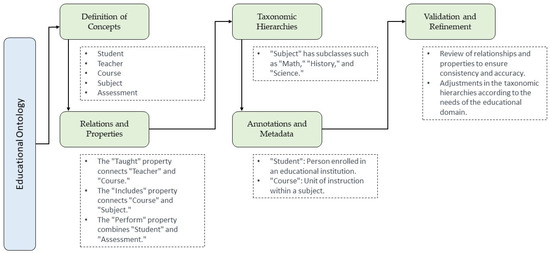All about Bioinformatics Tutor
All about Bioinformatics Tutor
Blog Article
Bioinformatics Tutor Can Be Fun For Anyone
Table of ContentsThe Greatest Guide To Bioinformatics TutorThe 5-Minute Rule for Bioinformatics TutorThe Of Bioinformatics TutorNot known Factual Statements About Bioinformatics Tutor Getting The Bioinformatics Tutor To Work
Of the overall participants entailed in the training, 80% were trainees from public higher education and learning establishments, while the remaining 20% originated from exclusive establishments. To receive a certification of participation, students were needed to attend a minimum of 90% of the overall training hours. As an outcome of this requirement, an excellent 95% of the participants successfully obtained their certifications, having not only met the minimum participation standards yet also finished all assigned tasks throughout the training.
Throughout the elevation of the COVID-19 pandemic, particularly between June and August 2020, the job team was entrusted with arranging specialized training in bioinformatics. This training was especially intended at students from the study team Center for Study in Applied Computing at the Federal College of Pará (UFRA) The adjustment to remote learning platforms due to the pandemic created an opportunity to explore new mentor techniques and digital devices that enhanced both reach and performance.
To react to the growing need in the computer and life sciences areas, an innovative program was introduced in 2020 labelled Intro to Maker Learning. This program was designed to provide an accessible yet thorough introduction of Expert system strategies, specifically as applied in bioinformatics. The program was executed over 3 months, from October to December 2020, and was supplied totally online through the Google Meet system. This digital layout allowed involvement from students throughout Brazil, many of whom might not have had the chance to go to in-person sessions.
The Greatest Guide To Bioinformatics Tutor
Approximately 50% of the complete training hours were committed to useful tasks where pupils built intelligent models and applications in an array of scientific domain names, consisting of genes, molecular biology, and ecological data evaluation. These systems allowed students to engage in real-time data manipulation, design training, and formula trial and error.
Sixty of them were associated with various higher education and learning institutions in the state of Pará, while the staying twenty came from organizations found in 5 other Brazilian states. By introducing Artificial Knowledge in a pertinent and sensible context, the initiative served to connect the void in between concept and real-world application, providing trainees with weblink a strong foundation for future study or work in the field.
The training campaign created component of a wider scholastic outreach effort known as the Bioinformatics on the Road project. This task has, for many years, presented dozens of students to the globe of bioinformatics and computational biology. The occasions held under this umbrella effort have taken location across multiple regions and years, as summed up in Table 1 (List of events, places, years, and overall varieties of students and teachers)
Numerous of these teams, at first brought together by their involvement in training events, have given that gone on to create independent scientific research in collaboration with neighborhood academic establishments. The training not just promoted clinical thinking within the context of bioinformatics yet also triggered joint connections that extended past the training environment.
The Ultimate Guide To Bioinformatics Tutor
The very same team, omitting IH and RR, additionally acted as tutors for the practical training modules. Funding for the project was provided via the give 88887.200562/ 2018-00 from CAPES.
The Federal University of Pará's Office of Study (PROPESP/UFPA) also provided monetary assistance, particularly for the manufacturing of the final manuscript. The writers proclaim no industrial or economic conflicts of rate of interest that can have influenced the research. Furthermore, all analyses and opinions shared in this short article are only those of the authors and do not necessarily show those of their particular establishments, the author, editors, or customers included in the magazine procedure.

Bioinformatics Tutor - Truths
From an instructional point of view, the mentor approach used in the training was intentionally interactive. Classes were carried out in a fashion that urged pupil participation and discussion, going past rote memorization to explore exactly how concepts are established, used in life, and Find Out More examined in scholastic settings. The educational viewpoint concentrated on supporting both strong and having a hard time students, providing customized support, and building self-confidence via sustained mentorship and patience.

Each group, including roughly 36 individuals, was sustained by 3 mentors-- most of whom look at this website were postdoctoral researchers with specific know-how. These advisors not just helped make the team jobs yet also promoted their execution, making certain that each research concern was both appropriate and properly challenging. The goal was to provide a biologically sensible context that individuals might check out via flexible purposes and accessibility to curated datasets.
For added insights into the method and end results of this project-based understanding strategy, readers are directed to S1 Text, which consists of in-depth summaries of the instructional framework, evaluation techniques, and project motifs made use of in the training sessions.
Some Known Questions About Bioinformatics Tutor.
Of the overall participants included in the training, 80% were trainees from public higher education organizations, while the staying 20% came from personal establishments. To qualify for a certificate of involvement, students were needed to participate in at least 90% of the total training hours. Significantly, beyond the students who registered in the training sessions, 7 skilled teachers participated in supplying the courses, while 3 committed research professors coordinated the general training procedure. About 50% of the total training hours were dedicated to practical activities where trainees constructed smart versions and applications in a range of clinical domains, consisting of genetics, molecular biology, and environmental data analysis. The training not only fostered scientific thinking within the context of bioinformatics however likewise sparked joint relationships that expanded beyond the training atmosphere.
Report this page